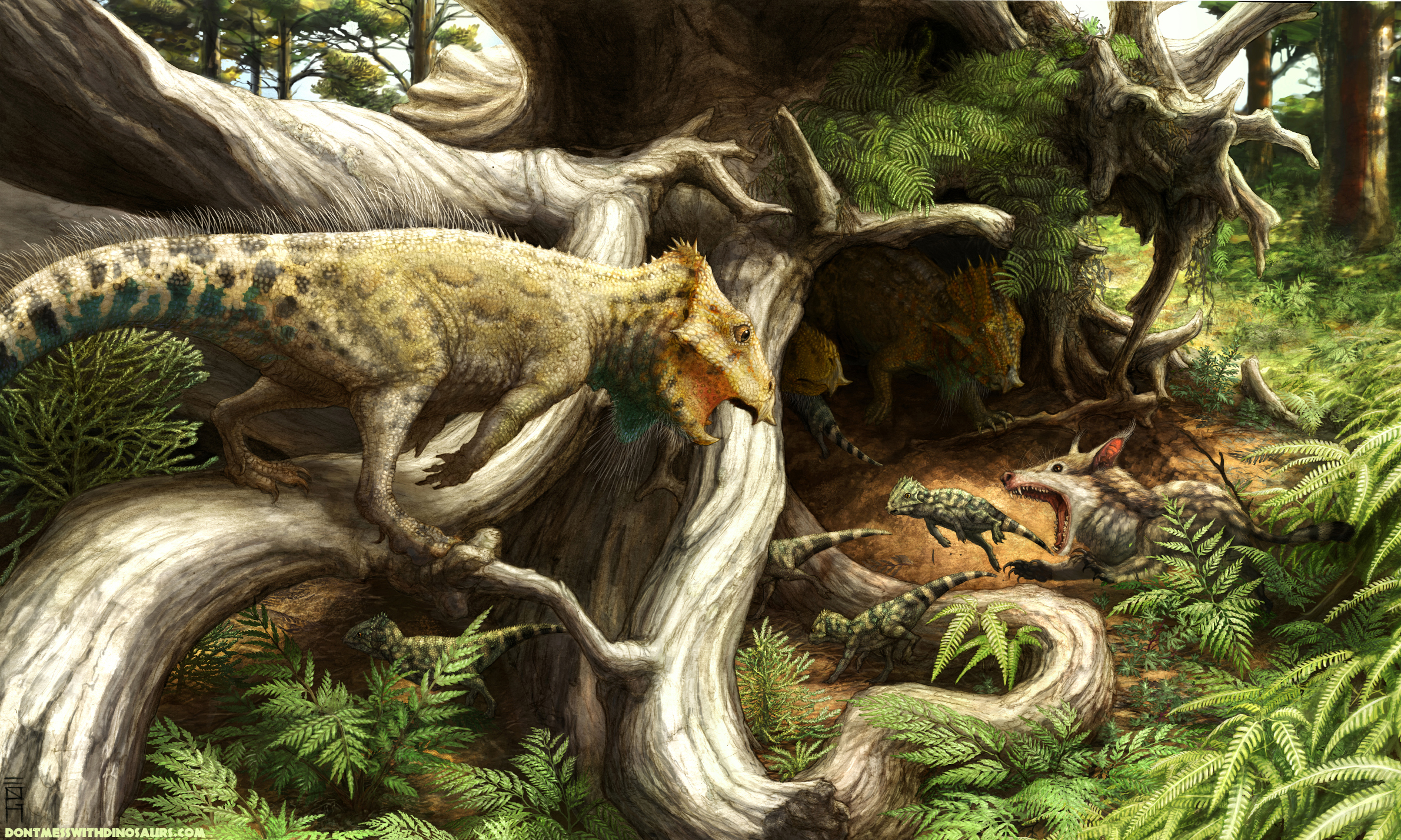Gobiconodon on:
[Wikipedia]
[Google]
[Amazon]
 ''Gobiconodon'' is an extinct genus of carnivorous
''Gobiconodon'' is an extinct genus of carnivorous
 ''Gobiconodon'' is an extinct genus of carnivorous
''Gobiconodon'' is an extinct genus of carnivorous mammal
Mammals () are a group of vertebrate animals constituting the class Mammalia (), characterized by the presence of mammary glands which in females produce milk for feeding (nursing) their young, a neocortex (a region of the brain), fur or ...
from the Middle Jurassic
The Middle Jurassic is the second epoch of the Jurassic Period. It lasted from about 174.1 to 163.5 million years ago. Fossils of land-dwelling animals, such as dinosaurs, from the Middle Jurassic are relatively rare, but geological formations co ...
to Early Cretaceous
The Early Cretaceous ( geochronological name) or the Lower Cretaceous (chronostratigraphic name), is the earlier or lower of the two major divisions of the Cretaceous. It is usually considered to stretch from 145 Ma to 100.5 Ma.
Geology
Pro ...
. It weighed , had a skull of in length, and had in presacral body length. It was one of the largest mammals known from the Mesozoic. Like other gobiconodontids, it possesses several speciations towards carnivory, such as shearing molar teeth
A tooth ( : teeth) is a hard, calcified structure found in the jaws (or mouths) of many vertebrates and used to break down food. Some animals, particularly carnivores and omnivores, also use teeth to help with capturing or wounding prey, tear ...
, large canine-like incisor
Incisors (from Latin ''incidere'', "to cut") are the front teeth present in most mammals. They are located in the premaxilla above and on the mandible below. Humans have a total of eight (two on each side, top and bottom). Opossums have 18, whe ...
s and powerful jaw and forelimb musculature, indicating that it probably fed on vertebrate prey; rather uniquely among predatory mammals and other eutriconodonts, the lower canines were vestigial, with the first lower incisor pair having become massive and canine-like. Like the larger ''Repenomamus
''Repenomamus'' (Latin: "reptile" (reptilis), "mammal" (mammalis)) is a genus of opossum- to badger-sized gobiconodontid mammal containing two species, ''Repenomamus robustus'' and ''Repenomamus giganticus''. Both species are known from fossils ...
'' there might be some evidence of scavenging
Scavengers are animals that consume dead organisms that have died from causes other than predation or have been killed by other predators. While scavenging generally refers to carnivores feeding on carrion, it is also a herbivorous feeding be ...
.Zofia Kielan-Jaworowska, Richard L. Cifelli, Zhe-Xi Luo (2004). "Chapter 7: Eutriconodontans". Mammals from the Age of Dinosaurs: origins, evolution, and structure. New York: Columbia University Press. pp. 216–248. .
Species
References
{{Taxonbar, from=Q1011259 Bathonian genus first appearances Callovian genera Oxfordian genera Kimmeridgian genera Tithonian genera Berriasian genera Valanginian genera Hauterivian genera Barremian genera Aptian genera Albian genera Cenomanian genus extinctions Early Cretaceous mammals of Asia Cretaceous China Cretaceous Mongolia Cretaceous Russia Fossils of China Fossils of Mongolia Fossils of Russia Early Cretaceous mammals of Europe Cretaceous Spain Fossils of Spain Early Cretaceous mammals of North America Cloverly fauna Middle Jurassic mammals of Europe Late Jurassic mammals of Europe Cretaceous England Fossils of England Fossil taxa described in 1978 Prehistoric mammal genera